Top 10 interesting facts about the mantis insect
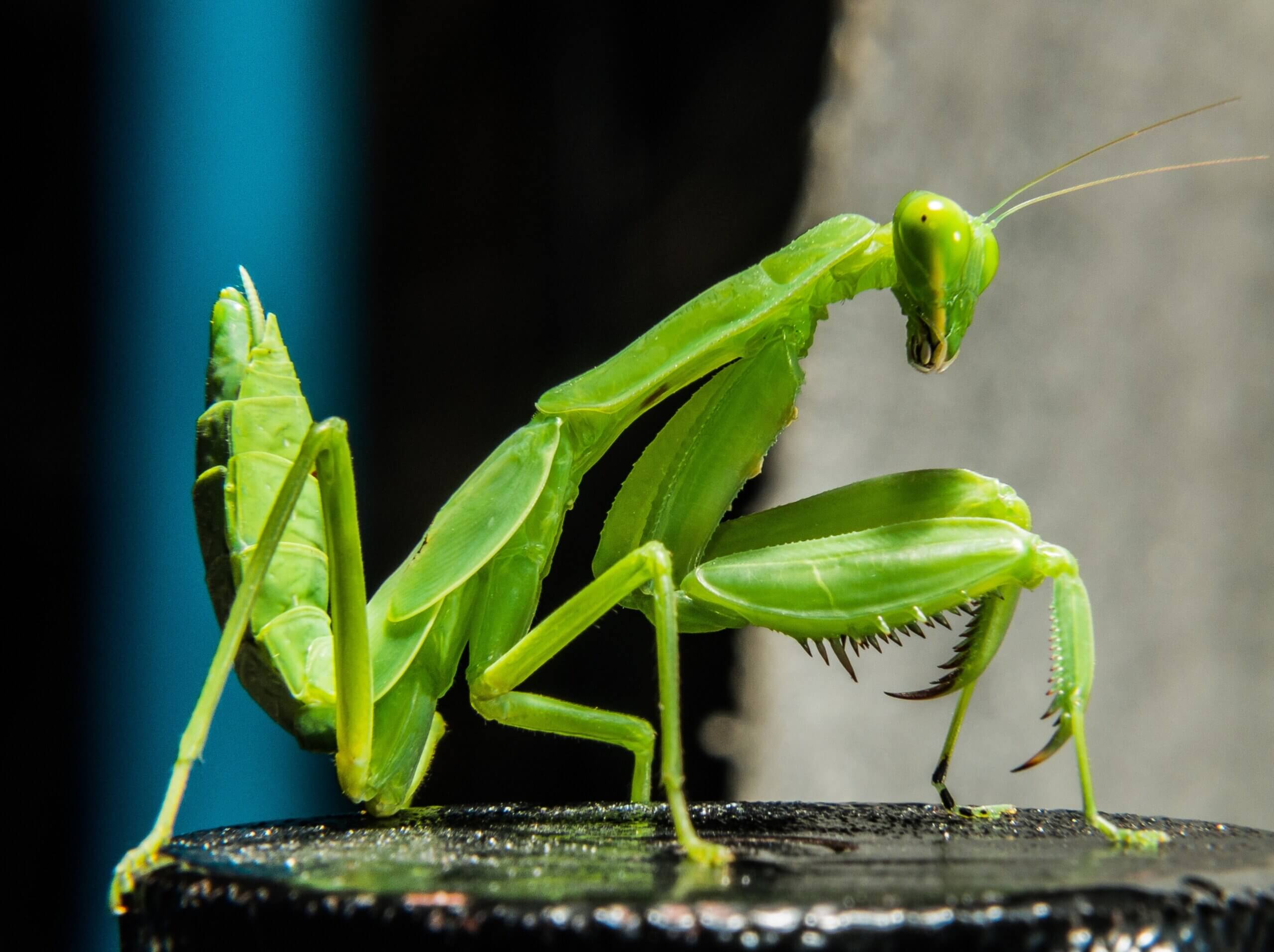
The mantis is an insect that causes surprise. Its habits and behavioral features can shock many people who were previously unfamiliar with this creature. The insect often appears in ancient myths and legends of different countries – in China, for example, mantises were considered the standard of greed and stubbornness. It is hard to believe that these crumbs are very cruel. These ruthless insects enjoy the process as they deal with their prey at a slow pace.
We have tried to collect the most exciting facts about mantises-incredible insects! If you spend a little time reading, you will learn something new that will surprise your friends and show off your broad outlook.
Here are the top 10 interesting facts about the mantis insect
1. Ancient Egyptians worshipped praying mantises.
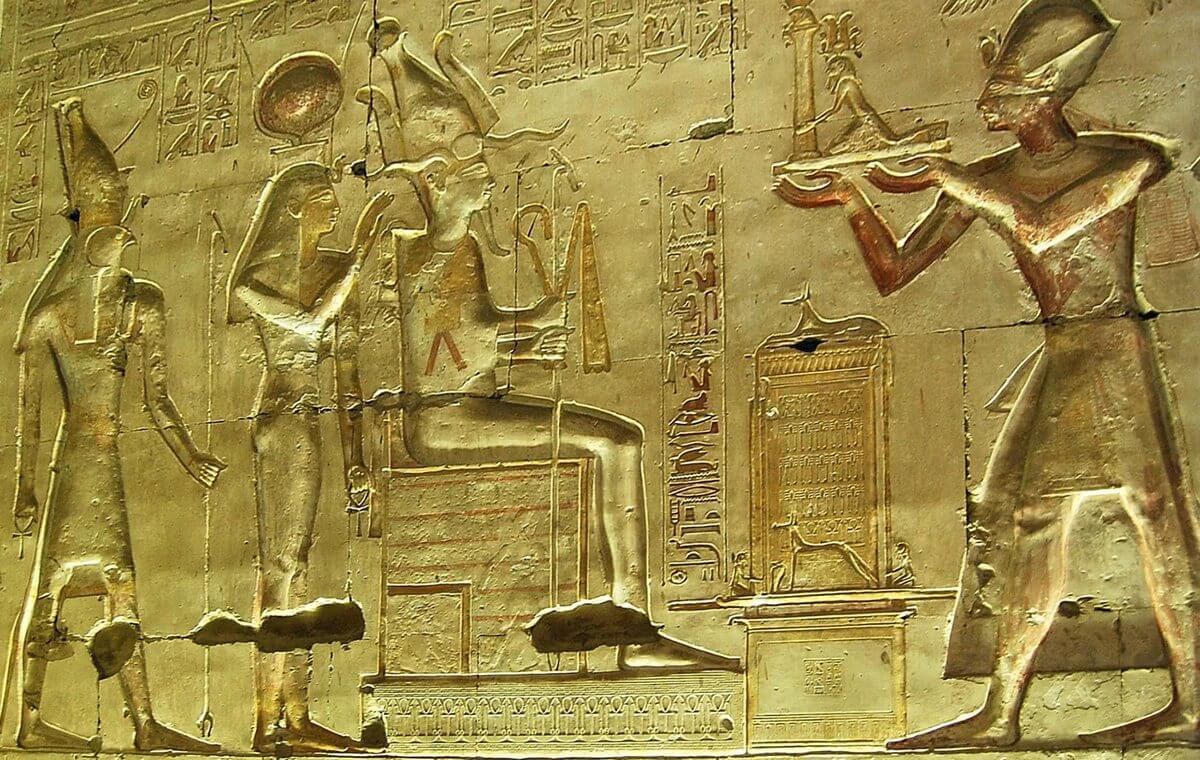
Mantises are ancient insects famous for their fearless disposition and unusual appearance. In Ancient Egypt, this remarkable insect left its mark as an image on the tomb of the Ancient Egyptian Pharaoh Ramesses II.
Religious Egyptians even mummified them. The mantis had the right to its sarcophagus and the afterlife. Archaeologists in 1929 opened such a coffin, but the mummy disintegrated too quickly but remained in the photographs.
2. Females prefer not to fly.
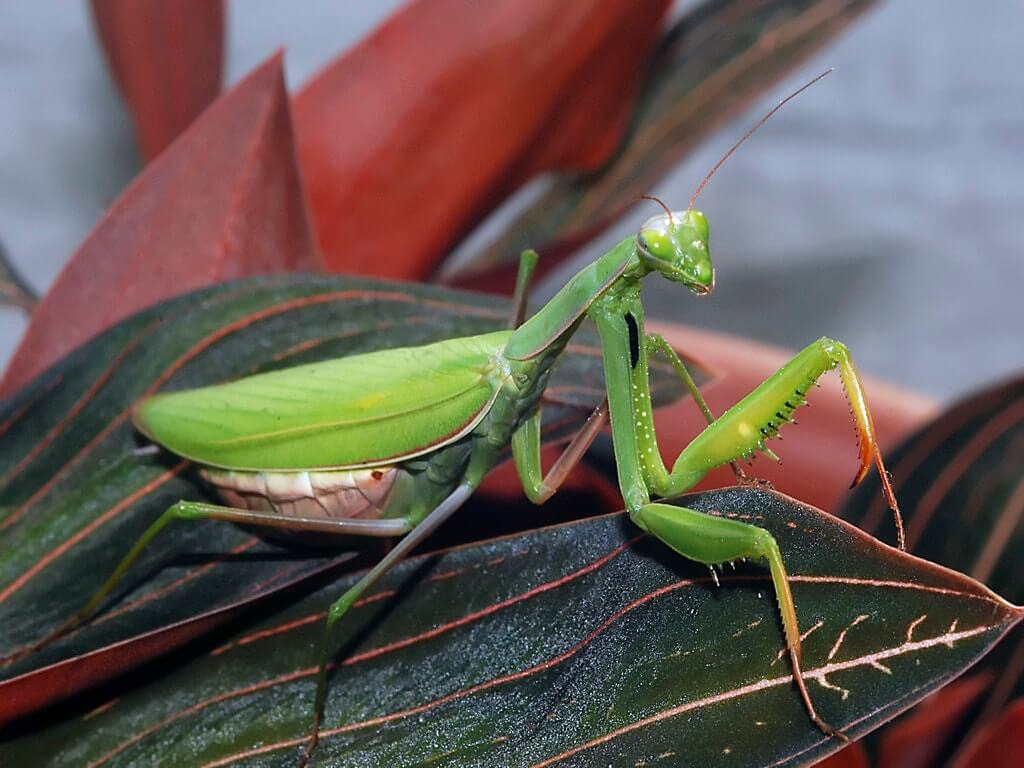
The praying mantis sits motionless for hours, sometimes even days. It fits perfectly into the environment, so the chance of noticing it is minimal.
Despite the well-developed wings, the praying mantis moves very slowly, and if we talk about flying, it does it very badly. A slow-flying insect seen from afar is easy prey for birds, so the praying mantis does not fly unless necessary, and females generally only rise to the wing in the most extreme cases – this is too risky. They are larger than the males, and their wings are relatively weak.
3. More than two thousand species of praying mantises have been identified
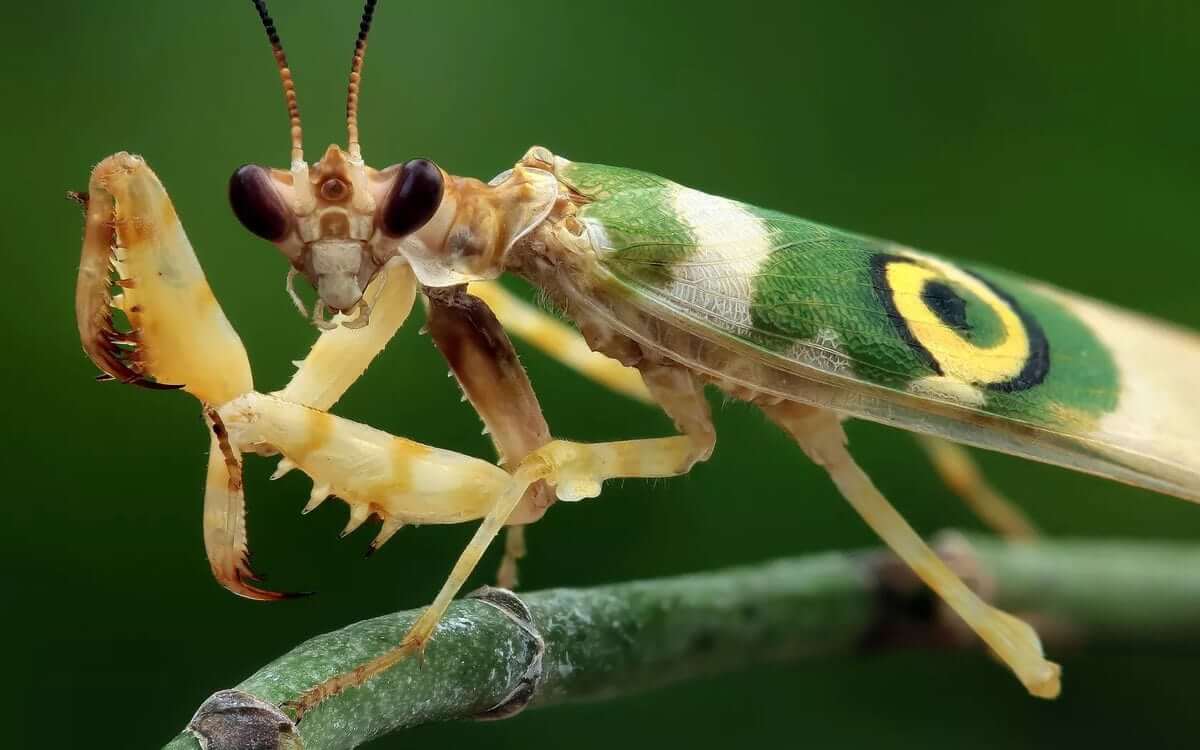
There are about 2,000 species of praying mantises on our planet, and, interestingly, they are all very different in their way of life and color. Russia's most common praying mantises (48-75 mm) are often found in the steppes and southern Siberia, the Far East, the North Caucasus, Central Asia, etc.
Desert species of these insects are characterized by small size, and in the process of movement, they resemble tiny workers-ants. The most common colors of mantises are green and white-yellow. On average, an insect lives for about a year.
4. Mantises are predators
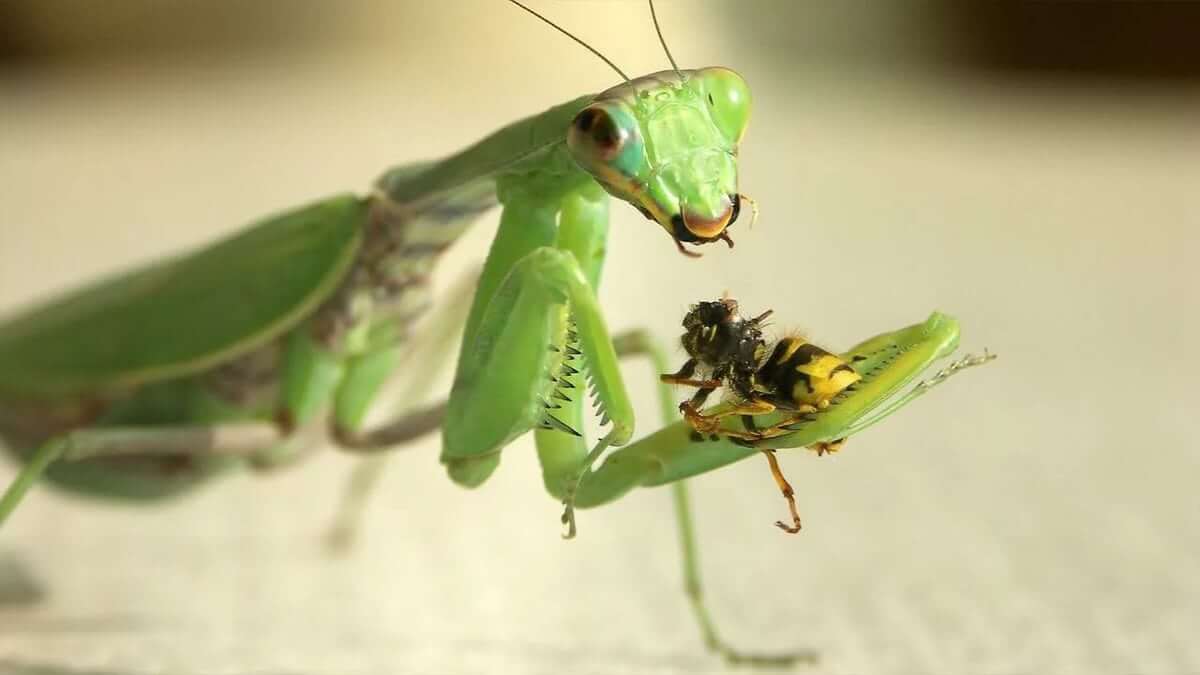
So, you have already learned that the praying mantis is a predatory insect. Let's talk about this in more detail. This insect lives globally, perhaps except in the polar regions, and adapts perfectly to different conditions. Most of all prefer a hot climate. The appearance of this creature resembles an alien! It has a triangular head shape, one ear, and two faceted eyes.
The praying mantis is a 100% predator. This fairly voracious insect can consume thousands of butterflies, cockroaches, grasshoppers, and dragonflies in just a few months. More significant individuals dare to attack even mice, birds, and frogs.
The praying mantis never eats dead insects – its prey must be alive; it should also resist. The praying mantis sits motionless, waiting for the victim, and as soon as it approaches, the predator grabs it with its front legs, tightly fixing the prey with spikes. No one can get out of the mantis ' grip anymore.
The feast begins with a bite of living flesh – the praying mantis watches with fascination as its victim suffers. But that's not the whole story of the mantis-sometimes they devour each other.
5. Part of the cockroach-like group
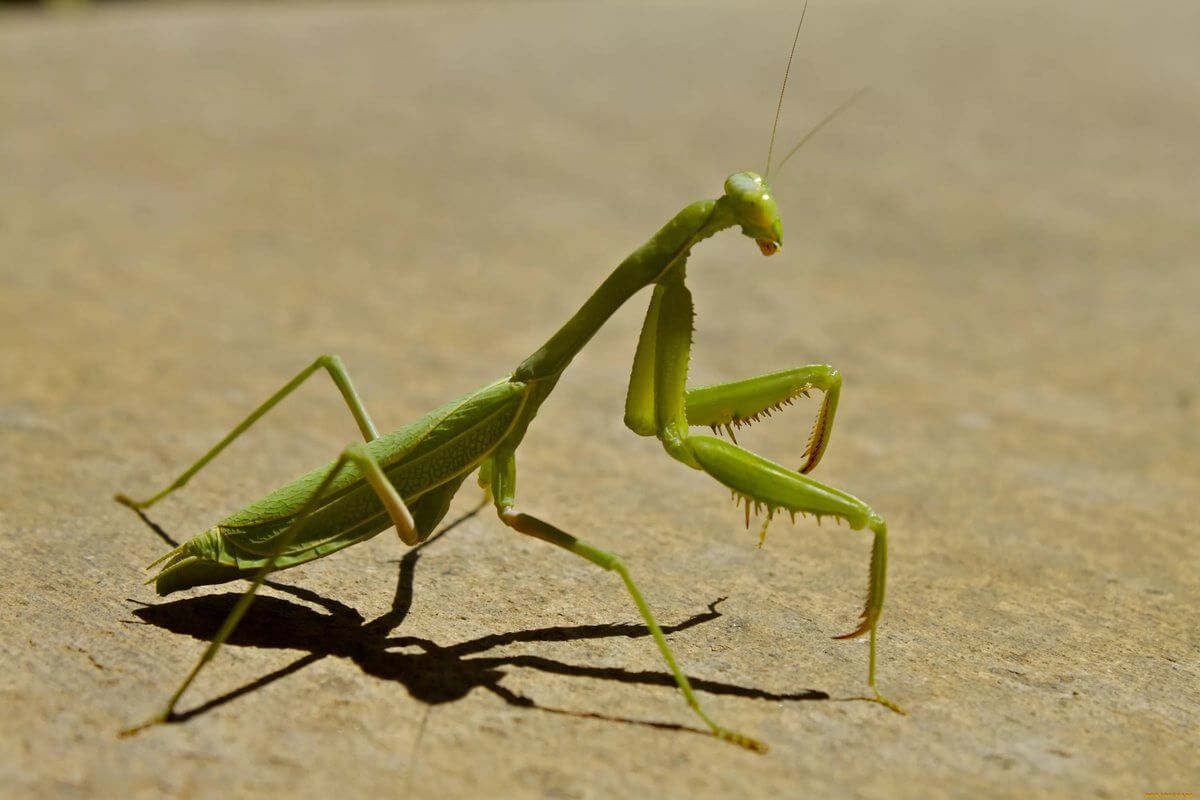
If you look at the mantis (for example, the one that lives in Asia), you can notice a strong resemblance to another representative of the insect world – the cockroach. So it is – the mantis is part of the order of cockroaches. In the narrow sense of the word, cockroaches are united by the same type and anatomical features of the wings and oral organs. It is noteworthy that the structure of the ootheca in cockroaches and mantises is different.
Interesting fact: the mantis grows up to 11 cm in length – this fact can frighten those disgusted with insects.
6. Mantis can turn its head 180 degrees
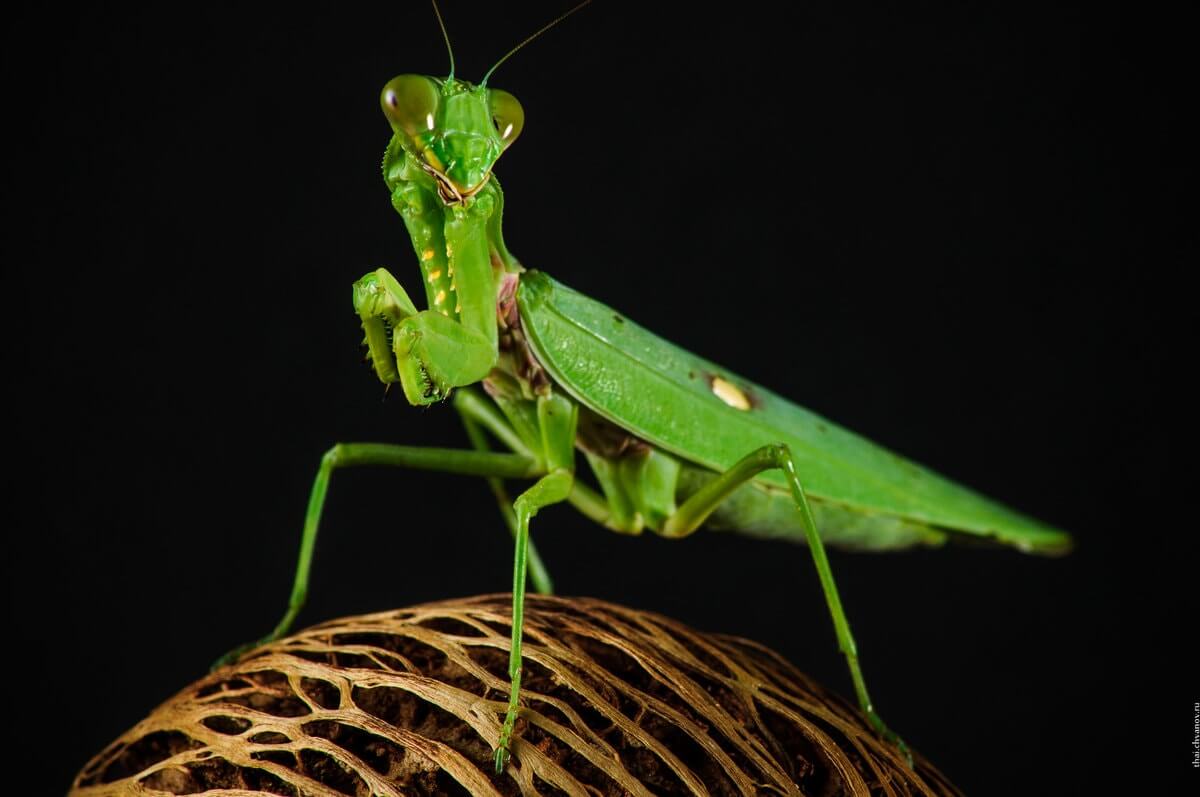
The mantis has incredible abilities. Its head is very mobile, equipped with sharp eyes. Manti is the only insect that can turn its head 180 degrees in different directions, so it has an expansive view (yes, many people would dream of such an ability!)
In addition, even though mantises have only one ear – they can hear everything perfectly, and thanks to the rotation of the head, no future victim of the mantis can escape from it.
7. Can disguise itself by changing its color
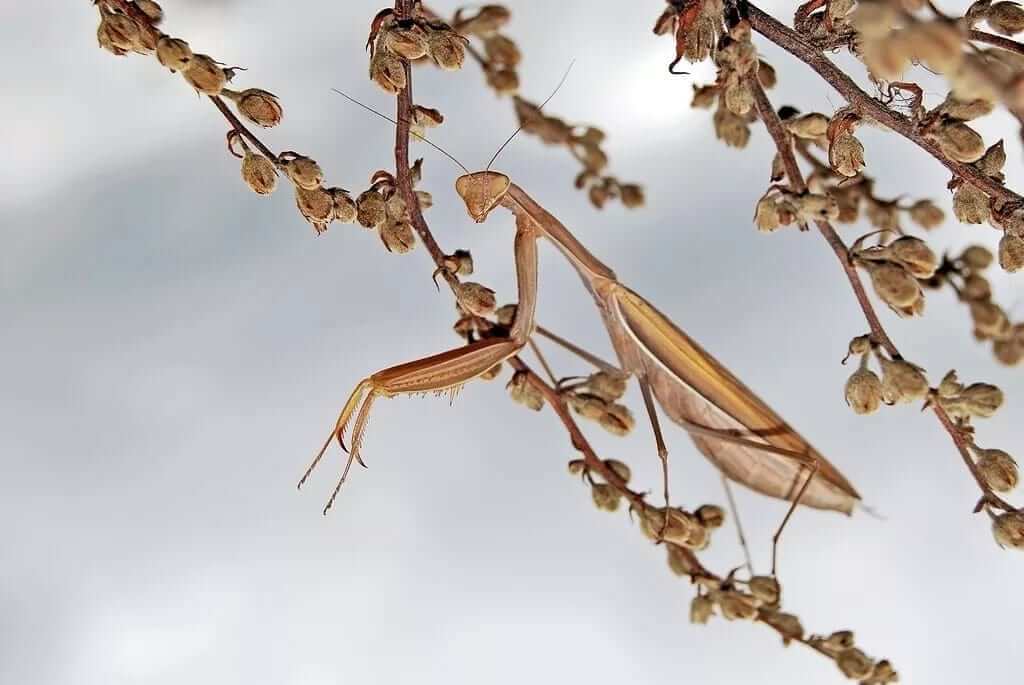
The praying mantis is a fantastic creature in everything! You can find both green and sand mantis. How do they change color? The fact is that the insect's color is very variable – it varies from green to darkish-brown. Masking helps them adapt to the background, blending in with it: whether it's earth or grass.
Mantises deftly merge with the surface on which they had to be in the first days after the molting process. And finally, it happens in a brightly lit area.
8. For some mantis species, mating is not necessary.
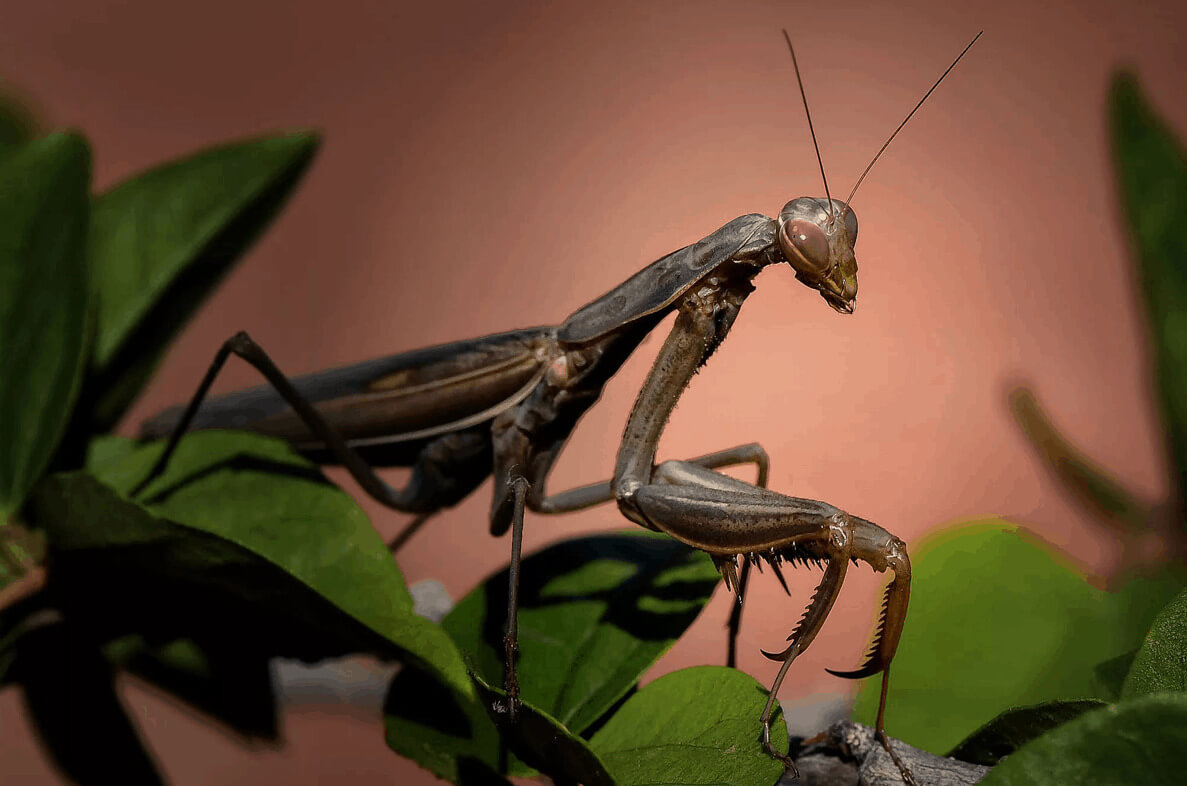
You already know that after mating, the female eats the male (and sometimes during coitus). This is due to the more significant protein requirement of the female when carrying fertilized eggs. At the beginning of autumn, females have an increased appetite – they eat a lot, which causes their stomachs to swell. From this, they move more slowly, preparing to lay eggs.
Not all praying mantises need mating to lay their eggs. Before their laying begins, the female chooses a necessarily flat surface and then forms a foamy substance on which the eggs are strengthened.
9. In 50% of cases, females eat males
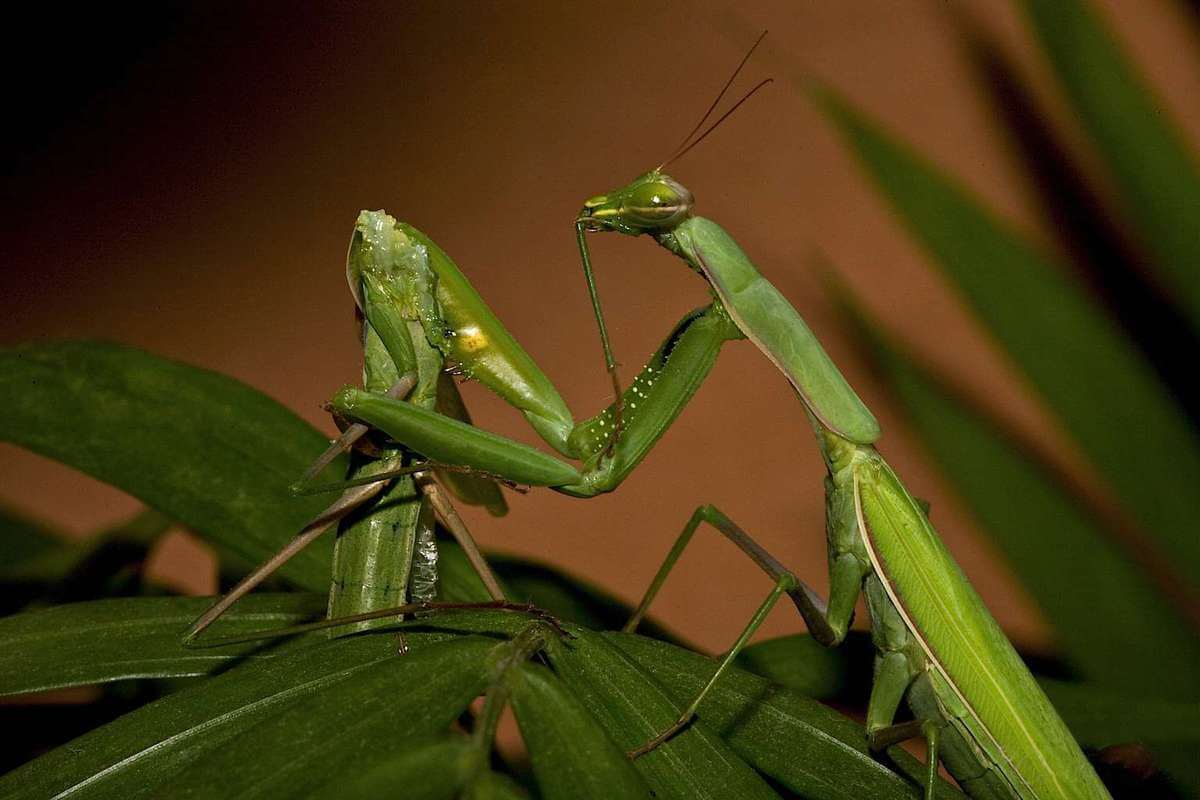
Probably, this fact will cause you shock! Get ready. After mating, the female praying mantis bites off the male's head. The reasons for this are banal – after physical exertion, the female feels hungry, and exposure to sex hormones increases her behavior's aggressiveness.
Only 50% of cases does the female satisfy her hunger with her sexual partner. The male is much smaller in size and, therefore, more agile. He decides whether to have dinner for his partner or "retreat." Males approach the female carefully to avoid getting caught in her eyes.
10. It got its name because of the structure of the legs
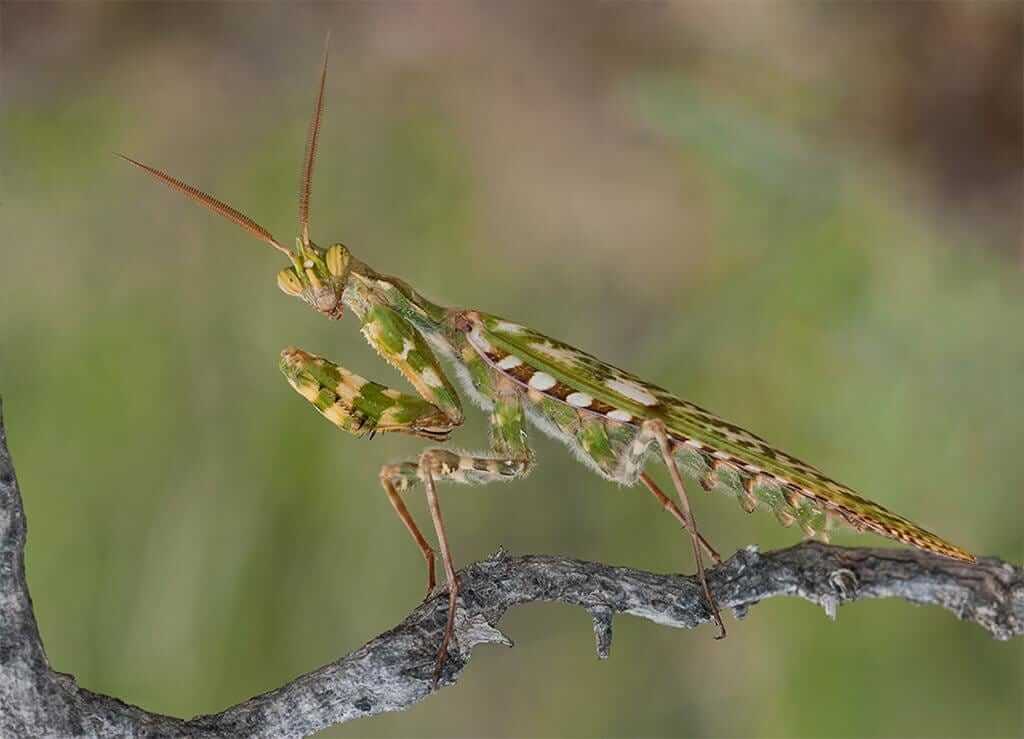
Mantises have interestingly folded front legs. When the insect is motionless – its legs are raised and folded in such a way that it resembles a pose in prayer. But, at this moment, he is not praying at all but is hunting.
The mantis is a very bloodthirsty creature – it can be called a killer or even a cannibal. During its hunt, it sits motionless, with its front paw outstretched. It's like a trap, and it is.
The praying mantis can grab an insect that passes by at any second to keep this bloodthirsty creature's prey, sharp notches located on the legs from the inside help.





